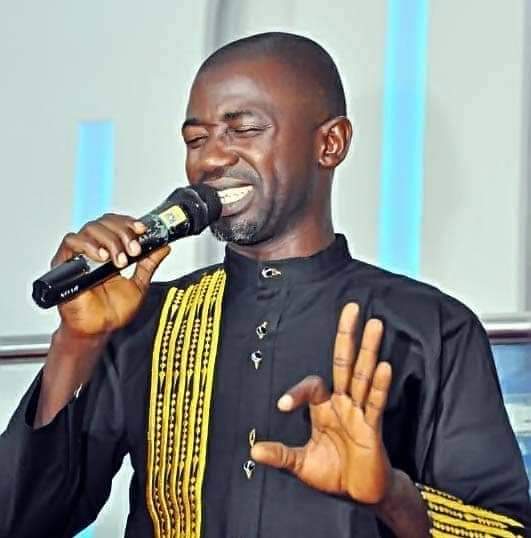What are the Types and techniques of opera singing and how to sing opera Beginner's guild
Types of opera singing
Manners of performance are divided into: melodious style, declamatory and coloratura singing.Singing style or cantilena
This type of performance is melodic. The sounds in it stretch, which adds softness and smoothness. It is the cantilena that allows the singer to fully reveal the expressive sound of his voice.Declamatory or recitative
Already based on the name, it can be assumed that recitative includes elements of conversation. It is a symbiosis of speech and song. The performer reads in a singsong voice, but at the same time, the intonation is preserved: interrogative notes, incentives, exclamations. Usually this manner is used in the intervals between arias, as a transitional element. A recitative accompanied only by a harpsichord is called "secco" (literally, dry). But the accompaniment of reading by the orchestra is much more powerful and sounds richer.coloratura
A performance that requires the performer to have excellent technical mastery of high notes. This singing is filled with complex techniques. The singer's voice in all registers sounds soft and powerful at the same time, the transitions are smooth, which creates the impression of ease of performance. Coloratura is a complex melody, but there are categories for different voices. So lyrical coloratura are written for light voices, and dramatic ones for larger ones. Assignment to a particular category depends on the range of the voice, its color.Types of voices in opera
There are many classifications of operatic voices. However, most often all categories are grouped into 7 types and they are divided by gender and altitude. Female Opera Vocals:- Soprano. The female soprano is the highest voice overall. In soprano, as in other types of voices, there is a division into subgroups depending on the timbre, range, color and weight of the voice. Thus stand out:
- Subrette (roles of young, flirtatious girls in comedy genres and operettas).
- Coloratura soprano.
- Spinto-soprano (the color is darker than in the lyric; it has high light notes).
- Lyric soprano.
- Dramatic soprano.
- Mezzo-soprano. Differs in sound volume and saturation. Its subgroups are coloratura, lyric and dramatic.
- Contralto. The lowest singing voice. Occurs rarely. Covers all notes of a small octave. Like the previous types, it is divided into coloratura, lyric and dramatic.
(ads1)
- Countertenor. Highest male voice.
- Tenor. High male singing voice. It is also subdivided into lyrical and dramatic timbre.
- Baritone. Medium sounding voice. Such a voice is universal and allows you to perform most of the heroic and love roles in the opera.
- Bass. The lowest voice. Has a deep sound. Height is distinguished:
- bass cantante (high bass; melodic and melodious sound);
- center (good sound in the low range);
- bass profundo (low bass; thick, booming voice).
History and development
The genre of opera singing appeared relatively recently - five hundred years ago between the 16th and 17th centuries. Italy is considered to be the birthplace of opera. At that time, theatrical performances were popular, where the music was the background. The first authors who made an attempt to create a new genre initially called it "drama per musica" (drama on music). The collective desire of composers to revive the ancient Greek tragedy led to the fact that they themselves, without knowing it, became the founders of a completely new type of art, even if initially their plays differed significantly from classical opera.Prominent figures in opera art
In 1607, the opera "Eurydice" by Mantue C. Montverdi was filled with drama and artistry. And already in 1639 a new term "opera" was introduced.
Since the beginning of classical opera, it has been constantly changing. Different Italian schools changed the sound, established new rules and forms. There was a division of vocal numbers. The most significant changes in the opera belong to K. Gluck, where he managed to combine the best achievements of Italian opera in his tragedies (Alceste, Orpheus and Eurydice, etc.).
It is impossible not to note the influence of W. Mozart, who created unique works filled with expressive images and vivid emotions. He managed to absorb the best from Italian schools of different eras and create complex and multifaceted images, conflicts and tragedies in his works.
Romanticism of the 19th century brought new relationships to opera with other genres, which was popular at the time. It was then that a huge influence on its development was exerted by: G. Verdi, R. Wagner, M. Glinka, M. Mussorgsky.(ads1)
How to learn opera - essential basics
It is impossible to give an unambiguous answer to the question of how to learn how to sing in the opera genre in a short time. Academic vocal is the art of operatic singing, which requires perfected skill and perseverance. Singers have spent years practicing the technique of mastering their voice, achieving a clear and powerful sound. It is possible to learn the technique on your own, but without an experienced teacher, there is a risk of forming the wrong habit from the very beginning, which will be difficult to get rid of in the future. Experienced opera vocal teachers say that everyone can learn to sing at any age. There are psychological problems if a person is not confident in himself or some physiological features that can interfere. In other cases, it all depends on the efforts and efforts.- wide range of voice;
- ability to use natural resonators;
- round, clear sound.
Breath
"Book"
You need to lie on your back. After several deep breaths, put the book heavier on your stomach and try to lower and raise it with your breath."Candle"
In this exercise, you can learn to control the exhalation. You need to sit in front of a burning candle and, taking a breath with your stomach, slowly blow on it, but do not extinguish it. The longer the flame flickers, the better. Proper breathing helps not only in vocals. The speech of people who regularly engage in such exercises becomes more melodic. They control their voice well and know how to expend air when talking.ATTENTION! With caution, do breathing exercises, especially at the beginning of training. Avoid dizziness.
Support
This term means a steady sound in both singing and voice formation. The supported voice is round, clear and free. This characteristic is very important when setting up a voice for singing . The following exercise will help with the development of support. It is one of the most effective, despite the complexity. Legs should be spread wide. Tilt the body forward and hang your arms. Then draw in the air with your stomach and exhale slowly, while lowering your hands down. Exhalation should be silent. And you can whistle 30 times. To do this, you need to take in air and continuously exhale the sound "s". When all the air runs out, repeat again.Resonators
These are cavities that are just below the vocal cords. Their function is to amplify the sound. It is believed that there are two types of resonators: head (high sounds are reflected in the head) and chest (sounds resonate in the trachea and bronchi).ATTENTION! Do not confuse the voice register and the resonator! The first is the segment of the voice range, and it allows you to sing higher or lower. The second is the voids in the body that are felt physically. It is due to the reflection of sound that it is amplified.The work with registers should be addressed after a person has learned to breathe in the stomach and lower the diaphragm. To strengthen the voice, you need to pay attention to the larynx. She must be free. At the same time, men lower their Adam's apple, and women do it mentally. The voice will be as sonorous as possible if the resonance goes through the head. You need to imagine how the flow will get there. The best exercise is "mooing". At the same time, it is necessary to listen and try to catch the feeling, when this very “mooing” appears in the head, then there will be a true resonance.
Larynx
- Open your mouth, fix it in this position, for example, trying to bite off an apple, and try to clearly pronounce the sounds: NGO, NGU, NGE, NGA.
- Train the tongue by pushing it out of the mouth with such force that it comes back on its own, like a frog.
ATTENTION! The larynx, like the entire throat, should be as relaxed as possible while singing.(ads1)
Articulation
Conversation and opera are completely different things in terms of articulation. When the singer relaxes the throat, lowers the larynx, the sounds that he begins to make should be legible. To do this, you need to train articulation. Patter will come to the rescue, gymnastics, as well as the old exercise using a foreign object in the mouth, as announcers train. By the way, this is why many people have a question why, while singing, singers and singers articulate strangely, as if they are grimacing. This is because the articulation when speaking and singing are completely different. Performers pay great attention to the proper functioning of the mouth and vocal cords, so that the sound is not only clear and powerful, but the viewer understands the text.chant
Chants are very important in order to prepare the voice for increased stress. Beginning singers of the adult vocal training course are advised to sing with their mouths closed. You only need to use the sound "hmm". The jaws must be open. Having performed a couple of notes in this way, you need to continue the exercise, but with your mouth open, using the sounds “ma”, “mo”, “mu”, etc. Having reached the maximum height, gradually lower back.Please Kindly drop a comment, Corrections and suggestions. Your Comment is a motivating factor for wikilyrics to perform greatly.











